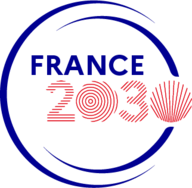The solid-state systems presently considered for quantum computation are built from localized two-level systems; prime examples are superconducting qubits or semiconducting quantum dots. Due to the fact that they are localized, they require a fixed amount of hardware per qubit. In contrast, photon-based qubits are the only existing quantum technology that uses propagating particles. In this case, the manipulation is performed through a set of gates towards which they propagate.
Propagating or “flying” qubits have distinct advantages with respect to localised ones: the hardware footprint depends only on the gates, and the qubits themselves (photons) can be created on demand making these systems easily scalable.
Photons, however, travel so fast, that their trajectories need to be set in advance and render in-flight manipulations impossible. Moreover, they do not interact directly with each other such that photon entanglement becomes a delicate issue, and the ‘all-linear’ quantum optics approach usually requires post-selection methods.
A qubit that would combine the advantages of localised two-level systems and flying qubits would provide a paradigm shift in quantum technology. In the long term, the availability of these objects would unlock the possibility to build an universal quantum computer that combines a small, fixed hardware footprint and an arbitrarily large number of qubits with long-range interactions, representing an unprecedent market opportunity.
Aim of the project and specific objectives
EQUBITFLY project aims to develop the first quantum nanoelectronics platform for the creation, manipulation and detection of propagative electronic excitations on time scales down to the picosecond.
By pioneering research for the manipulation of flying electrons in semiconductor nanostructures, the project will realise high-fidelity flying charge qubits and demonstrate their entanglement. Key objectives include the development of single electron sources, single electron detectors and enabling advancements in quantum nanoelectronics at terahertz frequencies, to address coherence challenges effectively.

Acknowledgement
EQUBITFLY Project benefits from State aid managed by the Agence Nationale de la Recherche under the France 2030 program, reference “ANR-22-PETQ-0012”.

